![]()
![]()
![]()
Use LEFT and RIGHT arrow keys to navigate between flashcards;
Use UP and DOWN arrow keys to flip the card;
H to show hint;
A reads text to speech;
15 Cards in this Set
- Front
- Back
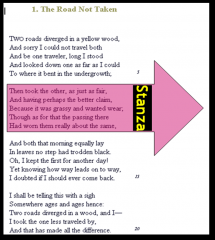
Poetic Stanza;
|
A Stanza consists of two or more lines of poetry that together form one of the divisions of a poem. The stanzas of a poem are usually of the same length and follow the same pattern of meter and rhyme and are used like paragraphs in a story. Some different types of stanzas are as follows:
Couplets - Couplets are stanzas of only two lines which usually rhyme Tercets - Tercets are stanzas of three lines. The three lines may or may not have the same end rhyme. If all three lines rhyme, this type of tercet is called a triplet. Quatrains - Quatrains are stanzas of four lines which can be written in any rhyme scheme. |
|
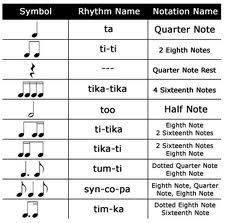
Rhythm
|
in poetry is just like rhythm in music: the pattern or stressed and unstressed syllables and pauses. It’s the arrangement of the beats.
|
|

foot
|

is a single rhythmic unit. It is one stressed syllable (or “beat”) and one or more unstressed syllables.
|
|
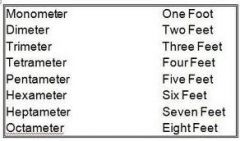
Meter
|
the number of feet in a line of poetry.
|
|
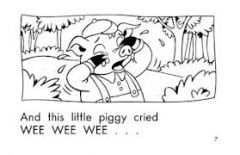
Sight Rhyme
|
Sight Rhyme • two words look alike but don’t sound alike, such as “LOVE” and “JOVE” or “DAUGHTER” and “LAUGHTER.” Slant Rhyme:
|
|
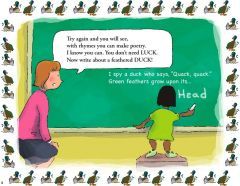
Slant Rhyme:
|
Two words are nearly rhymed but slightly different, such as “Lake”
and “Fate”. |
|

identical Rhyme:
|
dentical Rhyme: • two words are spelled differently but have the same pronunciation (also called homonyms), such as “TWO” and “TOO” or “RITE” and “RIGHT.”
|
|
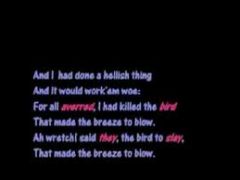
End Rhyme:
|
the rhyming words occur at the ends of lines of poetry.
|
|
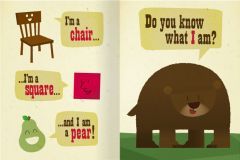
Internal Rhyme
|
the rhyme occurs inside a line, such as “Let’s BEAT the HEAT.”
|
|
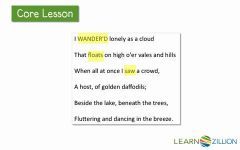
Rhyme Scheme
|
the pattern of rhyming lines in a poem. (For example, aabbccdd or ababcdcd)
|
|

Imagery:
|
Imagery is intense, descriptive language in a poem that helps to trigger
our senses and our memories when we read it. |
|
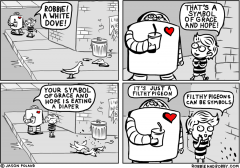
Symbolism
|
when the author uses an object or reference to add deeper meaning
to a story. Symbolism can be subtle or obvious, used sparingly or heavy-handedly. |
|
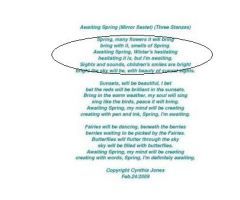
Alliteration
|
Alliteration happens when words that begin with the same sound are
placed close to one another. For example, “the silly snake silently slinked by” is a form of alliteration. Try saying that ten times fast. |
|

simile
|
Similes compare one thing directly to another. For example, “My love is
like a burning flame” is a simile. You can quickly identify similes when you see the words “like” or “as” used, as in “x is like y.” Similes are different from metaphors—for example, a metaphor would refer to the “burning flame of my love.” |
|

Metaphor
|
A metaphor happens when one thing is described as being another
thing. “You’re a toad!” is a metaphor—although not a very nice one. Metaphor is different from simile because it leaves out the words “like” or “as.” For example, a simile would be, “You’re like a toad.” |

